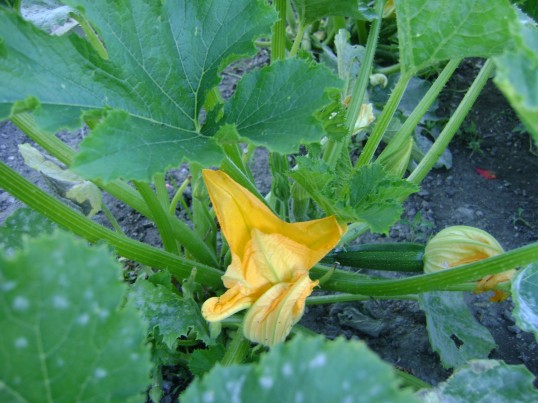This guest post has been written by Peter Kearney who created and runs the excellent City Food Growers web-site from Brisbane in Australia.Peter uses his horticultural knowledge and practical experience to explain how vegetable gardens can adapt to changing temperatures and unpredictable weather. |
||||||||||
|
Being in tune with your local climate is one of most important success factors for gardening. Climate change has complicated the picture for vegetable gardeners, but there is a silver lining. With the right knowledge at the right time, food gardeners can actually grow more because of climate change. Changing climate has in general brought greater extremes of temperatures with warmer and longer summers and often more extreme cold in winter, but on average, higher temperatures throughout the year. Food gardeners are finding that choosing vegetable crops with the methods they have always used is giving them results they don’t expect. For many gardeners, figuring out when its right to plant vegetables is based on one or more of the following:
Vegetables are very sensitive to temperatures at planting and over their growing period. Frost is a killer for many vegetables. If you plant too early or too late in the season you may be hit with frost. If it is hotter earlier in the season, there are many crops you could get underway which you would not normally grow at that time and because of extended warm periods you could be staging your crops for much greater production. There may be crops that you thought would not grow at all, but are actually now very suitable for your climate.
In a changing climate, the biggest opportunities for a healthier and more productive garden include:
Our web site planting calendar has been specifically designed to deal with these three opportunities . We have detailed local climate information and climate profiles for all the food plants in our web site. So you don’t need to know how to work through climate data, our Gardener subscriber planting calendar does it for you at the click of a mouse. It incorporates:
In these times of climate change, the objective knowledge on planting and climate in our Gardener subscriber site and its ease of use, gives you the power to make timely decisions on managing your vegetable garden. It will help you achieve greater success in your food garden. Visit: http://cityfoodgrowers.com.au/about.php This excellent site currently provides gardeners living in Australia, New Zealand and America the opportunity to adapt to climate change by simply choosing their closest weather station to create a local climate profile. This can then be fine tuned for your location in relation to the weather station and for micro-climates you may have created in your garden. Peter is planning to launch this useful system in the UK during 2011. If you would like to be included in the trial please e-mail at [email protected]. |
||||||||||










March 26th, 2012 at 8:18 am
What a great initiative and I am very much looking forward for a system like this in Europe. With this warm spring we are having right now I am tempted to plant sooner then usual but last year most of my crops died of a sudden frost mid May!
For that reason I am hesitant to plant out seedlings but I do not want to miss out on this warm sunny weather.